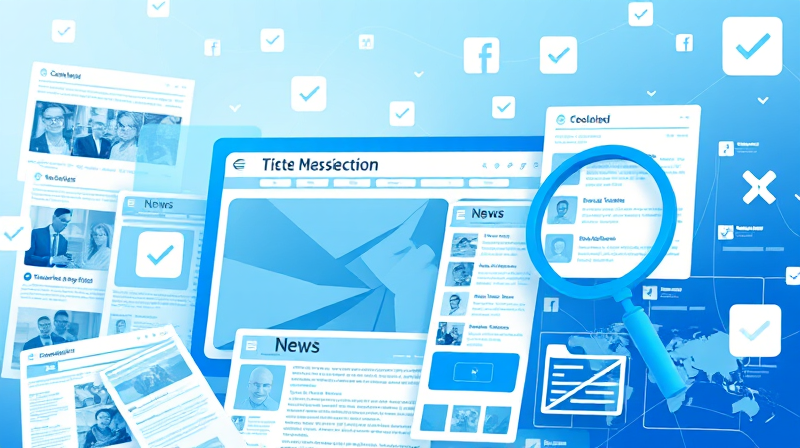In our modern world where digital information spreads rapidly, verifying facts has never been more crucial. Misinformation and unverified data are common challenges that every user must overcome. Engaging with multiple sources and applying verified methods are essential steps in confirming the authenticity of any report.
Reading online content without a critical eye can lead to the spread of inaccuracies. Therefore, learning effective fact-checking techniques is not only an intellectual exercise but also a responsibility to help build a more accurate collective understanding of events.
Building a Trustworthy Approach to Fact-Checking
There are several strategies a discerning reader can adopt. Each method contributes a unique insight into the verification process and helps mitigate potential errors. Understanding and applying these techniques will empower you to trust only the most accurate and well-substantiated reports.
Start with Dedicated Fact-Checking Sites
Begin your verification journey by using specialized fact-checking websites. Renowned platforms such as Snopes, PolitiFact, FactCheck.org, Reuters Fact Check, and AP Fact Check are known for their dedicated teams of experts who rigorously analyze claims. These sites offer detailed reports and context that can clarify even the most complex claims.
Leveraging these resources enables readers to quickly see whether a claim has already been investigated by professionals who specialize in debunking misinformation.
Apply the SIFT Method
The SIFT method, created by digital literacy expert Mike Caulfield, is a systematic approach that encourages users to take a moment before accepting any information. This method includes several steps designed to thoroughly assess online content.
- Stop: Pause and reflect on the credibility of the information before interacting with it further.
- Investigate the Source: Look into the origins of the claim to understand its context and history.
- Find Better Coverage: Seek out additional reputable sources that have reported on the same issue.
- Trace Claims: Follow the trail back to the original context to verify the accuracy of the report.
By following these steps, you ensure that you are not merely reacting to headlines, but actually understanding the story behind each piece of content.
Practice Lateral Reading
Lateral reading is another powerful technique where you learn about the validity of a claim by exploring multiple sources simultaneously. Instead of being confined to a single website, open several tabs while browsing. This method helps in comparing views and research from diversified sources.
This technique reduces the risk of being misled by a biased or isolated perspective, offering a broader understanding that could reveal inaccuracies in the original report.
Verify Images and Videos
Visual content is crucial in many news reports, but images and videos can sometimes be misleading. Using reverse image search tools such as Google Images, TinEye, and Yandex can help confirm if the visuals have been manipulated or taken out of context. These tools allow you to discover the history of an image and understand its original purpose.
Always cross-reference the visual material to ensure you are not being deceived by misleading graphics or outdated images that do not relate to the current situation.
Check Dates and Context
The accurate timeline of events is key to understanding any report in its true light. Information that is outdated or sanitized by the removal of crucial context can lead to misinterpretation. It is vital to verify the dates associated with a report and compare the information with the historical context that surrounds the event.
This step helps eliminate any distortions that could be created by selectively updating or omitting critical details.
Consult Multiple Sources
Relying on a single source is one of the major pitfalls in digital literacy. Using multiple reputable outlets to cross-check information not only validates the content but also provides diverse perspectives. This approach is particularly useful in a media landscape where opinions and biases vary widely.
Cross-referencing multiple claims ensures that the final picture accounts for all nuances and avoids the pitfalls of misinformation spread through isolated channels.
Be Aware of Your Own Biases
Self-reflection is an often overlooked aspect of verifying information. Every individual carries inherent biases. Thus, it's crucial to seek out viewpoints that challenge your preconceived notions. By engaging with diverse perspectives, you stand a better chance of unearthing the complete truth behind any reported claim.
This process of continuous reflection and adjustment ultimately leads to a more well-rounded and informed understanding of the world around us.
In summary, by integrating these techniques—consulting trusted fact-checking sources, applying the SIFT method, practicing lateral reading, verifying visual content, checking dates and context, consulting multiple sources, and being self-aware of personal biases—you bolster your ability to distinguish between reliable information and misinformation.
Remember: The journey of verifying information does not end once a single source is consulted. The digital landscape provides an abundance of perspectives, and each piece of information must be weighed carefully against this diverse background.
Empower yourself with these techniques and become an active participant in the fight against misinformation, ensuring that each piece of information you trust is as reliable as possible.








